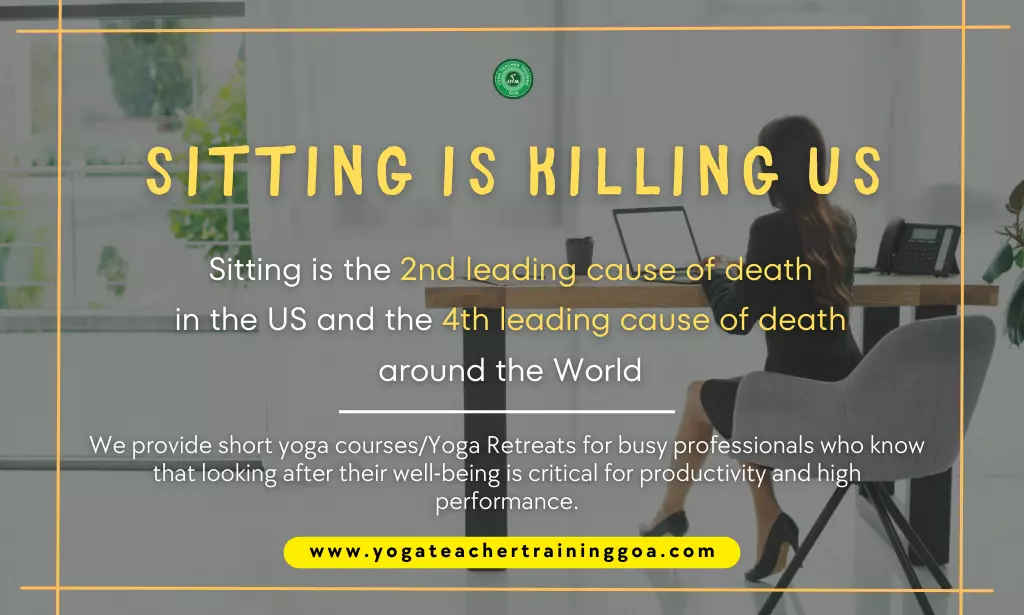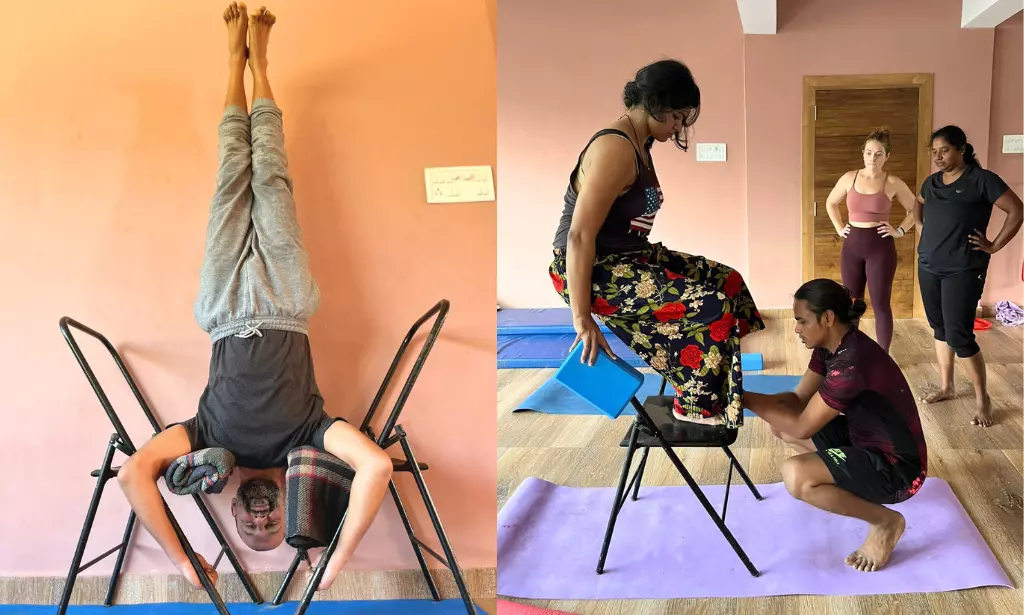
How sitting is killing us
How sitting is killing us
How sitting is killing us – You’ve probably heard the phrase ‘sitting is the new smoking’. Well, it’s also the new obesity, diabetes and cancer. Sitting all day is killing us. From depression to diabetes and early death, the chair is deadlier than the gun.
Technology is impressive in many ways, but the downside of it is a world in which most of us spend most of our lives sitting and staring at screens. Studies show that the average person in the developed world sits 12 hours a day – in cars, on trains and buses, at desks, on sofas in front of TV, sitting in cafes and restaurants… sitting, sitting, and sitting.
Our entire society and environment are structured around being seated. We sit in our schools, cinemas, public transport, offices, cafes and restaurants. We feel unlucky if we don’t get a seat, and as children, we are made to stand as a punishment.
The human body was not built for this. The human body was designed to move to function correctly. We are all born with a full range of movement, but our culture of sitting gradually robs us of these natural abilities and our full potential to move, bend, flex, and reach.
What it causes
All this sitting is causing everything from digestive and metabolic issues to cancers, heart disease, diabetes, and early death. Not to mention sore backs, stiff necks, tight hips and shoulders. Then there are the mental impacts. Sitting for more than six hours during the workday puts you at a higher risk for anxiety and depression. Nations such as the UK and the US are losing millions of working days yearly due to excessive sitting.
And guess what else? Sitting makes you stupid. How? Your brain needs oxygen and nutrients to create new brain cells and facilitate critical thinking. This is why Steve Jobs used to have ‘walking meetings’ and why companies like Google have made meditation and mindfulness an official company policy.
Health risks
The health risks of sitting are the same as smoking and obesity. How does sitting do that? Much of it concerns how sitting affects our breathing and digestive organs. When we sit, we tend to chest breathe instead of taking full breaths with our whole diaphragm.
If you breathe with your diaphragm, your lungs can expand fully. Your lungs have the space to stretch down your torso, which means that all the little alveoli in the lungs, the tiny air sacs, also get stretched, and you receive a larger supply of fresh air.
But when you only chest breathe, only the top of your lungs get the fresh air. One of the problems with this is that blood flow only moves through the top of your lungs. The blood flow to the top of the lungs is about six times less than in the bottom of the lungs. Because of gravity, blood flow is much stronger in the bottom of the lung, but if you’re only breathing at the top, you get less oxygen around the body via the bloodstream. Less oxygen in the bloodstream impacts every bodily system – your muscles waste, your brain shuts down, and your metabolism slows.
The other impact of sitting is on detoxifying the body – or lack thereof. The lymph system’s job is to take the waste and toxic products from the body via lymph fluid. But lymph fluid relies on the movement of the muscles to work. When you move your body, it compresses lymph nodes and the lymph fluid flows. Most of our lymph nodes are under the diaphragm, so if you only chest due to being seated too long, again, you accumulate toxic poisons. Toxic overload contributes to everything from auto-immune disease to cancer and stress.

What are the solutions?
So what is the solution? What needs to happen to pull the army of 9-5 office workers back from the brink of emotional, mental and physical breakdown?
It’s not rocket science. We need to stand up and move more. To be healthy and happy humans in a healthy, happy society, we must respect and honour how our bodies have been designed to operate. Ultimately, we must re-design the way we live and work.
Studies show movement is linked to improved concentration and greater productivity, and just 10 minutes of movement is all it takes to increase mental focus.
Moving muscles pumps fresh blood and oxygen to the brain, which releases mood-enhancing chemicals.
This is why you need yoga in your workplace. However, it’s just one initiative that more forward-thinking companies are implementing, along with ‘walking meetings and standing desks, according to Duncan Selbie, chief executive of Public Health England.
Is your office in need of a health and wellness injection? Are tempers frayed, is discontent brewing and illness prevalent?
A short yoga class once or twice, three times a week, even daily, could solve workplace blues, office bickering and rising levels of sick leave. From 45 minutes to an hour of yoga before work to start the day well, to a lunchtime class to recharge the batteries, or an unwinding session after work.
Yoga lifts spirits and energy levels and boosts concentration, brain function, and productivity. Yoga can release the stress and tension that builds up in the body from long days sitting at the desk and soothe racing minds.
We provide short yoga courses/Yoga Retreats for busy professionals who know that looking after their well-being is critical for productivity and high performance.
How sitting is killing us How sitting is killing us How sitting is killing us How sitting is killing us
